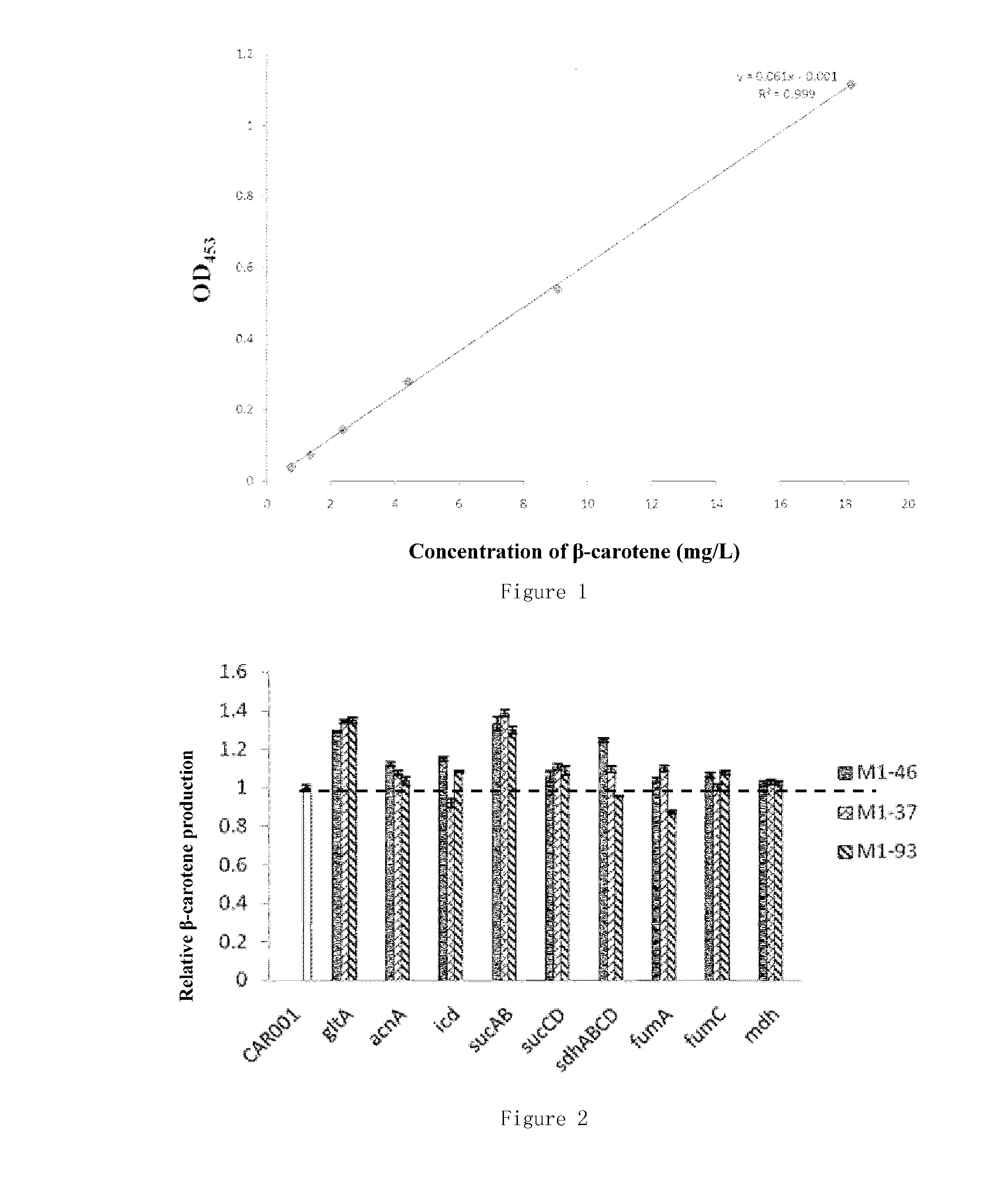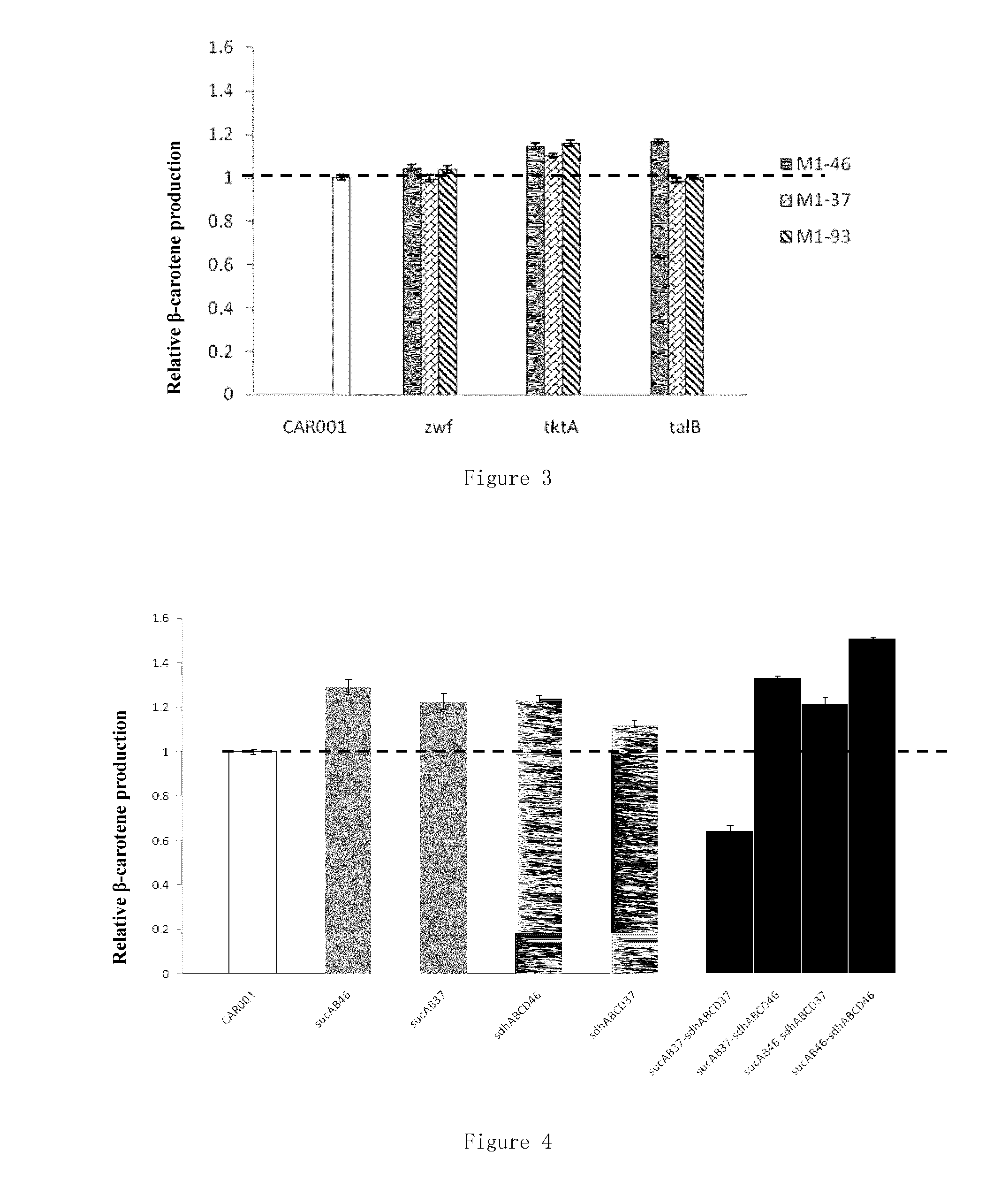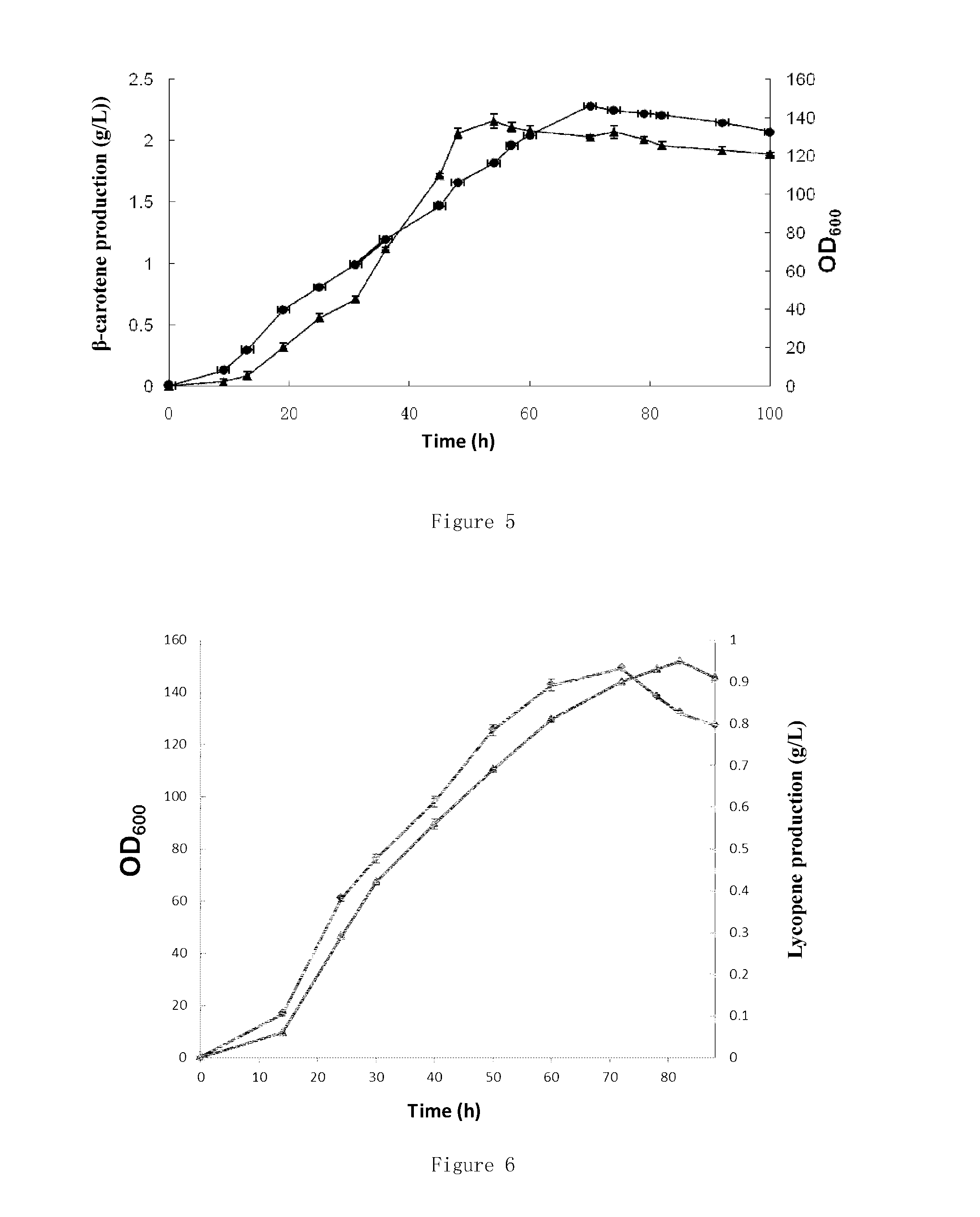Recombinant microorganism for preparing terpenoid and method for constructing recombinant microorganism
a technology of terpenoids and recombinant strains, applied in microorganisms, biochemistry apparatus and processes, enzymology, etc., can solve the problems of unstable mutant strains, low terpenoids production, low productability of fermentation, etc., and achieve the effect of improving the enzymatic activity of -ketoglutarate dehydrogenas
- Summary
- Abstract
- Description
- Claims
- Application Information
AI Technical Summary
Benefits of technology
Problems solved by technology
Method used
Image
Examples
example 1
Introduction of β-Carotene Synthesis Gene into E. coli to Obtain Recombinant E. coli
[0104]I. Introduction of β-Carotene Synthesis Gene Via a Plasmid to Construct Recombinant E. coli ATCC 8739 (pACYC184-M-Crt)
[0105]IPP, DMAPP and FPP may be synthesized by E. coli itself via MEP pathway and FPP synthase. However, E. coli cannot synthesize β-carotene by itself. A cluster of β-carotene synthesis gene exists in Pantoea agglowerans under the same operon. The β-carotene synthesis gene cluster consists of geranyl-geranyl diphosphate (GGPP) synthase gene (crtE, SEQ ID NO: 1), β-carotene cyclase gene (crtX, SEQ ID NO: 2), lycopene β-cyclase gene (crtY, SEQ ID NO: 3), phytoene desaturase gene (crtI, SEQ ID NO: 4), and phytoene synthase gene (crtB, SEQ ID NO: 5).
1. Construction of Recombinant E. coli ATCC 8739 (pACYC184-M-Crt)
[0106]The β-carotene synthesis gene cluster was introduced into E. coli ATCC 8739 (Gunsalus I C, Hand D B. The use of bacteria in the chemical determination of total vita...
example 2
Construction of Recombinant E. coli CAR001 and Fermentation
[0142]The construction of recombinant E. coli CAR001 and fermentation thereby were divided into following 8 steps:
1 Improvement of the Expression Strength of the β-Carotene Synthesis Gene Cluster of Recombinant E. coli QL002 and Construction of Recombinant E. coli QL105
[0143]Recombinant E. coli QL105 was such that the trc regulatory part (SEQ ID NO: 6 in the sequence listing) of the β-carotene synthesis gene cluster crtEXYIB of QL002 was replaced with an artificial regulatory part M1-12 (SEQ ID NO: 7 in the sequence listing) by a two-step homologous recombination.
[0144]With the two-step homologous recombination, the artificial regulatory part was inserted before the gene to be regulated, and no resistant gene or FRT marker was left after the operation. In a first step homologous recombination, original regulatory part of the gene was replaced with a cat-sacB fragment; and in a second step homologous recombination, the cat-sa...
example 3
Improvement of Expression Strength of α-Ketoglutarate Dehydrogenase Gene of Recombinant E. coli CAR001
[0178]1. Improvement of Expression Strength of α-Ketoglutarate Dehydrogenase Gene of Recombinant E. coli CAR001 and Construction of Recombinant Strains SucAB46-FKF, SucAB37-FKF, and SucAB93-FKF
[0179]Recombinant E. coli SucAB46-FKF, SucAB37-FKF, and SucAB93-FKF were, respectively, recombinant E. coli CAR001 having original regulatory part (SEQ ID NO: 15) of α-ketoglutarate dehydrogenase gene (sucAB) replaced with artificial regulatory parts M1-46 (SEQ ID NO: 14), M1-37 (SEQ ID NO: 10), and M1-93 (SEQ ID NO: 11), respectively.
[0180]Original regulatory region of a gene on a chromosome of E. coli was replaced with artificial regulatory parts having various intensities through a pair of general primers using one-step homologous recombination. An upstream primer was gene-up-FRT, comprising 50 bases outside the original regulatory region of the gene to be regulated and 20 bases homologous ...
PUM
| Property | Measurement | Unit |
|---|---|---|
| Strain point | aaaaa | aaaaa |
Abstract
Description
Claims
Application Information
 Login to View More
Login to View More - R&D
- Intellectual Property
- Life Sciences
- Materials
- Tech Scout
- Unparalleled Data Quality
- Higher Quality Content
- 60% Fewer Hallucinations
Browse by: Latest US Patents, China's latest patents, Technical Efficacy Thesaurus, Application Domain, Technology Topic, Popular Technical Reports.
© 2025 PatSnap. All rights reserved.Legal|Privacy policy|Modern Slavery Act Transparency Statement|Sitemap|About US| Contact US: help@patsnap.com



